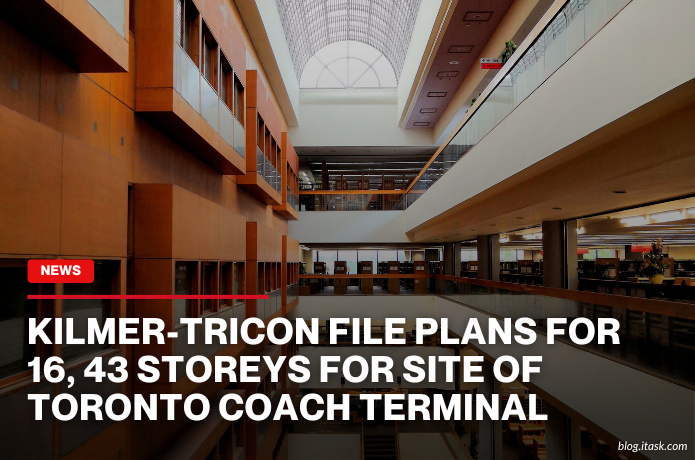Kilmer-Tricon File Plans For 16, 43 Storeys For Site Of Toronto Coach Terminal
Kilmer-Tricon File Plans For 16, 43 Storeys For Site Of Toronto Coach Terminal

The historic Toronto Coach Terminal, closed since 2021, is set for a major transformation. Kilmer Group and Tricon Residential have filed plans to redevelop the site at 610 Bay Street and 130 Elizabeth Street into a mixed-use community featuring two towers: one 16 storeys and the other 43 storeys tall. The project aims to deliver 858 purpose-built rental units, including 290 affordable homes, along with retail, office, and public spaces.
The redevelopment is part of Toronto's ModernTO program, which focuses on repurposing underused city-owned properties. The design incorporates the Indigenous principle of the Seven Directions, emphasizing interconnectedness and community. The heritage Art Deco terminal building, constructed in 1931, will be preserved and integrated into the new development, maintaining its historical significance.
A key feature of the project is a 23,000-square-foot Toronto Paramedic Services hub, enhancing emergency response capabilities in the downtown core. Additionally, the University Health Network plans to operate a state-of-the-art organ repair centre on-site, focusing on heart, lung, kidney, and liver transplants.
The development will also include a new public plaza between the two towers, designed to serve as an urban oasis with tree-lined spaces and 'outdoor rooms' for community interaction. Sustainability is a priority, with plans for a geothermal district energy system and building designs that exceed Toronto's Green Standard and aim for Zero Carbon Building Design Certification.
Construction is expected to begin in late 2025, with the 16-storey tower at 610 Bay Street slated for completion in early 2029, and the 43-storey tower at 130 Elizabeth Street following in early 2030. The project represents a significant step in addressing Toronto's need for affordable housing while preserving its architectural heritage.
Mayor Olivia Chow expressed support for the initiative, highlighting its potential to provide much-needed affordable homes and community services. "This project sets a high bar for how we can build more homes, while celebrating our city's history and embracing Indigenous knowledge as we build new communities," she stated.
